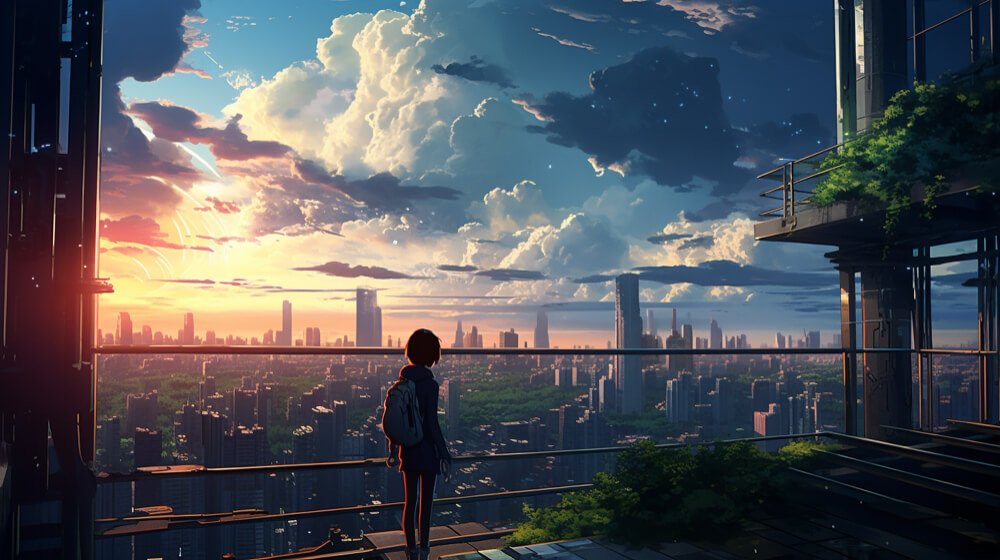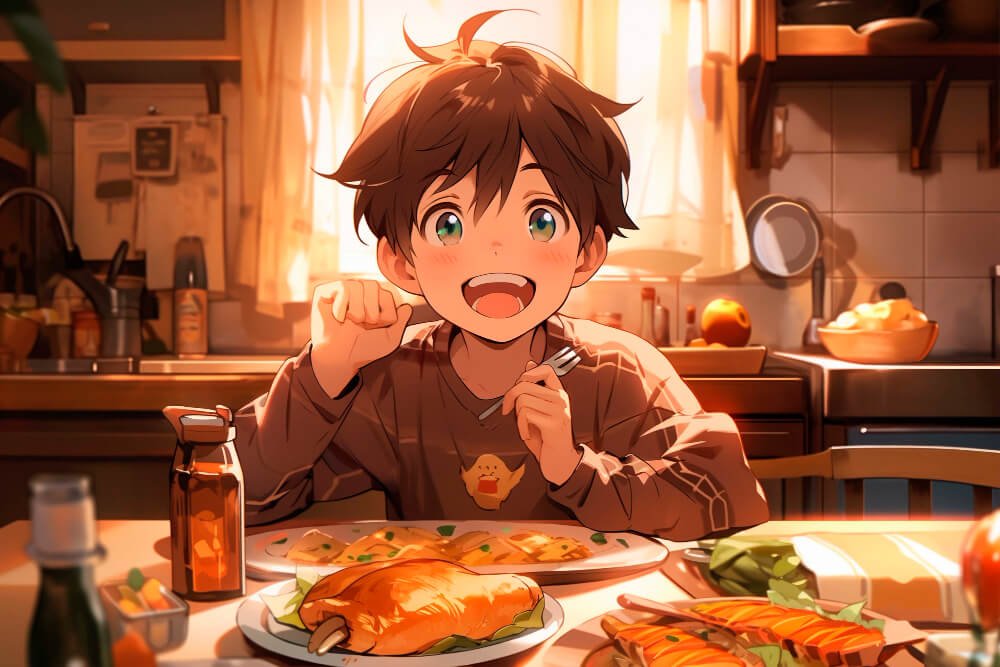Welcome to the enchanting world of isekai, a genre that has captured the imaginations of audiences worldwide with its captivating blend of fantasy, adventure, and escapism. In Japanese, “isekai” translates to “another world,” and that’s precisely what these stories offer—a journey into alternate realms where anything is possible.
At its core, the isekai genre revolves around the concept of characters being transported from their ordinary lives into extraordinary new worlds. Whether through reincarnation, summoning, or virtual reality, protagonists find themselves thrust into fantastical realms filled with magic, monsters, and mystery.
One of the defining features of isekai is the opportunity for characters to undergo profound growth and transformation as they navigate their new surroundings. From humble beginnings, they embark on epic quests, forge new friendships, and confront formidable foes, all while discovering hidden powers and uncovering the secrets of their new reality.
Isekai stories often explore themes of identity, belonging, and the nature of heroism, as characters grapple with the challenges and responsibilities thrust upon them in their newfound roles. Along the way, they encounter a diverse cast of characters, from wise mentors and loyal companions to cunning adversaries and enigmatic deities.
While the settings and premises of isekai stories vary widely from medieval kingdoms to futuristic dystopias the genre’s appeal lies in its ability to transport audiences to worlds where the rules of reality are suspended, and the possibilities are limitless. Whether you’re drawn to tales of sword and sorcery, political intrigue, or high-tech adventures, there’s an isekai story out there to satisfy every appetite for adventure and exploration.
So, come along on a journey beyond the boundaries of imagination and unlock the secrets of the isekai genre—a realm where dreams become reality, and the ordinary becomes extraordinary.
Rise of isekai: Popularity and cultural impact
Embark on a journey beyond the boundaries of imagination and explore the diverse landscapes and cultures of isekai worlds. Whether you’re drawn to medieval kingdoms teeming with magic and dragons, futuristic dystopias filled with advanced technology and political intrigue, or virtual realms where video game mechanics reign supreme, there’s an isekai adventure waiting for you.
Immerse yourself in tales of friendship, redemption, and self-discovery as protagonists navigate the challenges of their new lives while forging bonds with allies and facing off against formidable adversaries.
From light-hearted comedies to dark and gritty dramas, isekai offers a spectrum of storytelling possibilities, ensuring there’s something to satisfy every taste and preference.
Step into the enchanting realm of isekai, where ordinary lives collide with extraordinary adventures. The rise of isekai has taken the world by storm, captivating audiences with its immersive worlds, epic quests, and larger-than-life characters.
From reincarnation and summoning to virtual reality and parallel universes, isekai stories transport viewers to fantastical realms where anything is possible. Dive into a world of magic, monsters, and mystery, where heroes rise to meet their destiny and ordinary individuals discover their hidden potential.
Join the adventure and unlock the secrets of the isekai genre, a cultural phenomenon that continues to captivate audiences worldwide.

What makes the Isekai genre unique?
The isekai genre stands out for several unique characteristics that set it apart from other genres:
Embark on a journey beyond the boundaries of imagination and explore the diverse landscapes and cultures of isekai worlds. Whether you’re drawn to medieval kingdoms teeming with magic and dragons, futuristic dystopias filled with advanced technology and political intrigue, or virtual realms where video game mechanics reign supreme, there’s an isekai adventure waiting for you.
Immerse yourself in tales of friendship, redemption, and self-discovery as protagonists navigate the challenges of their new lives while forging bonds with allies and facing off against formidable adversaries.
From light-hearted comedies to dark and gritty dramas, isekai offers a spectrum of storytelling possibilities, ensuring there’s something to satisfy every taste and preference.
Step into the enchanting realm of isekai, where ordinary lives collide with extraordinary adventures. The rise of isekai has taken the world by storm, captivating audiences with its immersive worlds, epic quests, and larger-than-life characters.
From reincarnation and summoning to virtual reality and parallel universes, isekai stories transport viewers to fantastical realms where anything is possible. Dive into a world of magic, monsters, and mystery, where heroes rise to meet their destiny and ordinary individuals discover their hidden potential.

Elements of a successful Isekai story
Crafting a compelling isekai narrative requires careful attention to several key elements. From an intriguing premise that hooks readers or viewers from the start to immersive worldbuilding that brings fantastical realms to life, every aspect plays a crucial role in captivating audiences.
A relatable protagonist embarks on a journey of growth and self-discovery, surrounded by a dynamic cast of supporting characters who add depth and richness to the narrative. These characters, each with their own motivations and conflicts, contribute to the protagonist’s development and the overall progression of the story.
Epic quests and formidable challenges drive the plot forward, testing the protagonist’s courage, wit, and resolve. Whether it’s battling fierce monsters, unraveling ancient mysteries, or confronting personal demons, these trials push the characters to their limits and keep audiences on the edge of their seats.
Underlying themes and messages add layers of depth to the narrative, resonating with audiences on a deeper emotional level. Themes of friendship, identity, redemption, and the nature of power provide a framework for exploring complex moral dilemmas and universal truths, enriching the storytelling experience.
By skillfully weaving together these elements, creators can transport audiences to captivating new worlds, igniting their imagination and leaving a lasting impression long after the adventure concludes. With meticulous attention to detail and a keen understanding of storytelling fundamentals, isekai creators have the power to create immersive and unforgettable experiences that captivate audiences across the globe.
World-building in Isekai: Creating immersive and captivating settings
Crafting immersive and captivating settings is at the heart of world-building in isekai narratives. It’s about transporting audiences to fantastical realms teeming with magic, mystery, and wonder, where every detail contributes to the rich tapestry of the world.
From sprawling landscapes and towering cities to intricate cultures and magical systems, every aspect of the world must be meticulously crafted to create a sense of depth and believability. Whether it’s a medieval kingdom ruled by noble knights and powerful wizards or a futuristic metropolis buzzing with advanced technology and political intrigue, the setting should feel alive and vibrant, inviting audiences to explore its every corner.
But world-building goes beyond mere aesthetics—it’s about creating a cohesive and immersive experience that draws audiences into the story. This means considering the social, political, and economic structures of the world, as well as the impact of magic or technology on daily life. It’s about building a world with its own history, mythology, and lore, where every detail serves to enrich the narrative and deepen the reader or viewer’s engagement.
In the realm of isekai, world-building takes on an added layer of complexity, as protagonists are often outsiders thrust into unfamiliar environments. This provides an opportunity to explore the world through fresh eyes, allowing audiences to discover its wonders alongside the main character. Whether it’s navigating the customs of a foreign culture, mastering the intricacies of a magical system, or uncovering the secrets of a long-forgotten prophecy, world-building in isekai is about creating a sense of discovery and adventure that keeps audiences coming back for more.
By carefully crafting immersive and captivating settings, creators can transport audiences to worlds beyond their wildest imaginations, where the possibilities are endless and the adventures are unforgettable. It’s a testament to the power of storytelling to inspire wonder, ignite the imagination, and transport us to places we’ve only dreamed of.

Character development in Isekai: Protagonists, companions, and villains
Character development in isekai narratives is a cornerstone of storytelling, weaving together protagonists, companions, and villains into richly layered personas that drive the narrative forward and captivate audiences.
At the heart of every isekai tale is the protagonist, whose journey of growth and self-discovery forms the emotional core of the story. Whether they’re a reincarnated soul, a transported hero, or a virtual avatar, protagonists face formidable challenges that force them to confront their innermost fears, desires, and convictions. As they navigate the trials and tribulations of their new world, they undergo profound transformations, evolving from ordinary individuals into heroes of legend.
Companions play a crucial role in the protagonist’s journey, offering support, guidance, and camaraderie along the way. From loyal allies to quirky sidekicks, companions add depth and richness to the narrative, serving as foils to the protagonist’s strengths and weaknesses. Through their interactions and relationships, companions provide invaluable insights into the protagonist’s character, driving their development and shaping their destiny.
But no isekai story is complete without a formidable villain to challenge the protagonist and test their mettle. Whether it’s a power-hungry warlord, a malevolent sorcerer, or a sinister entity from another dimension, villains serve as the catalyst for conflict and the embodiment of the protagonist’s greatest fears and weaknesses. Through their machinations and schemes, villains push the protagonist to their limits, forcing them to confront their darkest impulses and make difficult choices that will ultimately define their destiny.
Character development in isekai is a dynamic and ever-evolving process, driven by the interplay of protagonists, companions, and villains as they navigate the trials and tribulations of their new world. By crafting compelling characters with depth, complexity, and relatability, creators can forge emotional connections with audiences, drawing them into the story and leaving a lasting impression long after the journey concludes.

Plot structure and storytelling techniques in Isekai
Plot structure and storytelling techniques are essential aspects of crafting engaging isekai narratives that captivate audiences and transport them to fantastical realms of adventure and wonder.
- 1. Introduction and Setup: Every isekai story begins with an introduction to the protagonist’s ordinary life in their original world. This segment establishes the protagonist’s character, motivations, and desires before they are transported to the new world. Whether through reincarnation, summoning, or virtual reality, the setup phase hooks audiences with an intriguing premise that promises exciting adventures to come.
- 2. Crossing into the New World: The moment of transition into the new world is a pivotal moment in the plot structure. It’s often accompanied by a sense of wonder and disorientation as the protagonist adjusts to their unfamiliar surroundings. This phase allows for exploration of the new world’s rules, cultures, and inhabitants, setting the stage for the protagonist’s journey of growth and discovery.
- 3. Quests and Challenges: Central to many isekai narratives are epic quests and formidable challenges that propel the plot forward. These trials test the protagonist’s courage, wit, and resolve, pushing them to confront their fears and overcome seemingly insurmountable obstacles. Whether it’s battling monstrous creatures, unraveling ancient mysteries, or forging alliances with unlikely allies, the quest phase is where much of the action and excitement unfolds.
- 4. Character Development and Relationships: Throughout the story, character development and relationships play a crucial role in driving the narrative forward. As the protagonist interacts with companions, allies, and adversaries, they undergo profound transformations, learning valuable lessons about themselves and the world around them. These relationships add depth and richness to the story, shaping the protagonist’s journey and influencing their decisions and actions.
- 5. Climax and Resolution: The climax of the story is the culmination of the protagonist’s journey, where they face off against the primary antagonist and confront the central conflict of the narrative. This climactic showdown is often accompanied by high stakes, intense action, and emotional catharsis as the protagonist confronts their innermost fears and doubts. The resolution phase provides closure to the story, tying up loose ends and offering a sense of fulfillment as the protagonist’s journey comes to an end.
In addition to plot structure, storytelling techniques such as foreshadowing, pacing, and world-building are essential for creating immersive and captivating isekai narratives. By skillfully integrating these elements, creators can transport audiences to captivating new worlds, igniting their imagination and leaving a lasting impression long after the adventure concludes.
The influence of Isekai on other media forms: Anime, manga, and light novels
The influence of isekai extends far beyond its origins in anime, manga, and light novels, permeating various other forms of media and entertainment with its captivating storytelling and imaginative world-building.
In the realm of anime, isekai has emerged as one of the most popular and prolific genres, captivating audiences with its fantastical settings, epic quests, and relatable protagonists. From iconic series like “Sword Art Online” and “Re:Zero – Starting Life in Another World” to newer hits like “That Time I Got Reincarnated as a Slime” and “The Rising of the Shield Hero,” isekai anime continues to dominate the airwaves, attracting viewers of all ages with its blend of action, adventure, and drama.
Manga, too, has felt the impact of isekai’s influence, with a plethora of titles exploring the genre’s themes and conventions in unique and creative ways. Whether it’s tales of reincarnated heroes, summoned adventurers, or virtual reality escapades, isekai manga offers readers a vast array of worlds to explore, each filled with its own wonders, dangers, and mysteries waiting to be uncovered.
Light novels, in particular, have played a significant role in popularizing isekai both in Japan and around the world. With their serialized format and engaging storytelling, light novels have become a breeding ground for innovative isekai narratives, introducing readers to unforgettable characters, intricate worlds, and epic adventures that keep them eagerly turning the pages.
But the influence of isekai extends beyond traditional forms of media, seeping into video games, web novels, and even Western literature and television. In the world of gaming, isekai-inspired titles like “Final Fantasy,” “The Legend of Zelda,” and “Dark Souls” draw inspiration from the genre’s themes of exploration, discovery, and heroism, offering players the chance to embark on epic quests of their own.
Web novels, with their accessible publishing platforms and global reach, have also become fertile ground for isekai storytelling, allowing aspiring authors to share their own tales of adventure and imagination with readers around the world. And in Western literature and television, isekai’s influence can be seen in works like “The Chronicles of Narnia,” “Alice in Wonderland,” and “Stranger Things,” which transport characters to alternate realities and fantastical realms where anything is possible.
In summary, the influence of isekai on other media forms is undeniable, shaping the landscape of entertainment with its imaginative storytelling, immersive world-building, and timeless themes of heroism, friendship, and self-discovery. As the genre continues to evolve and expand, its impact is sure to be felt for generations to come, inspiring audiences and creators alike to embark on epic adventures of their own.

Criticisms and controversies surrounding the Isekai genre
While the isekai genre has garnered widespread popularity and acclaim, it has also faced its fair share of criticisms and controversies.
One common critique is the perceived formulaic nature of many isekai stories, with tropes and conventions that can sometimes feel repetitive or derivative. From the typical “ordinary protagonist with hidden potential” to the reliance on overused plot devices like “transportation to another world,” some critics argue that the genre can feel stagnant and lacking in originality.
Another criticism revolves around the portrayal of female characters in isekai narratives. While there are certainly examples of strong and well-developed female protagonists in the genre, there is also a tendency for female characters to be relegated to supporting roles or to be portrayed in a stereotypical manner, such as the “damsel in distress” or the “fan service” character.
Additionally, some critics have raised concerns about the escapist nature of isekai stories and their potential to perpetuate unrealistic expectations or unhealthy fantasies. The idea of leaving behind one’s mundane life for a more exciting and adventurous world can be appealing, but it can also foster a sense of dissatisfaction with reality and a desire to escape from one’s problems rather than confront them.
There have also been controversies surrounding certain isekai works for their portrayal of sensitive topics or themes. From issues of cultural appropriation and Orientalism to depictions of violence, and other forms of problematic content, some isekai stories have sparked debate and criticism for their handling of sensitive subject matter.
Despite these criticisms and controversies, the isekai genre continues to thrive, evolving and expanding with each new iteration. While it’s important to acknowledge and address these issues, it’s also worth recognizing the genre’s potential for innovation and creativity, as well as its ability to provide audiences with engaging and thought-provoking stories that resonate on a deeper level.
The future of the Isekai genre: Trends and predictions
As the isekai genre continues to evolve and captivate audiences worldwide, several trends and predictions can be anticipated for its future trajectory.
One trend is the diversification of settings and premises within the genre. While medieval fantasy worlds have traditionally been popular settings for isekai stories, creators are increasingly exploring new and innovative settings, such as futuristic dystopias, historical periods, and even virtual realities. This trend opens up exciting possibilities for storytelling and allows for greater creativity and experimentation within the genre.
Another trend is the exploration of deeper themes and subtext within isekai narratives. While many isekai stories are known for their action-packed adventures and fantastical elements, there is also a growing emphasis on exploring complex themes such as identity, morality, and the nature of power. This trend reflects the genre’s maturation and its potential to offer more nuanced and thought-provoking storytelling experiences.
Furthermore, the isekai genre is likely to continue expanding its influence across various forms of media and entertainment. From anime and manga to video games, novels, and even Western literature and television, isekai’s popularity shows no signs of slowing down. As creators continue to push the boundaries of the genre and explore new storytelling possibilities, audiences can expect to see a diverse array of isekai stories that cater to a wide range of tastes and preferences.
Conclusion: Embracing the magic of Isekai storytelling

In conclusion, the future of isekai storytelling holds boundless potential for innovation, creativity, and exploration. As the genre continues to evolve and captivate audiences worldwide, it offers a gateway to fantastical realms teeming with adventure, mystery, and wonder. By embracing the magic of isekai storytelling, creators can transport audiences to captivating new worlds, ignite their imagination, and inspire a sense of wonder and possibility. Whether through epic quests, intricate worldbuilding, or thought-provoking themes, isekai offers a rich tapestry of storytelling possibilities that continue to captivate audiences of all ages. As we eagerly await the next chapter in the isekai saga, let us embrace the journey ahead and embark on epic adventures beyond the boundaries of imagination. For in the world of isekai, the only limit is the depths of our own imagination, and the magic of storytelling knows no bounds.





